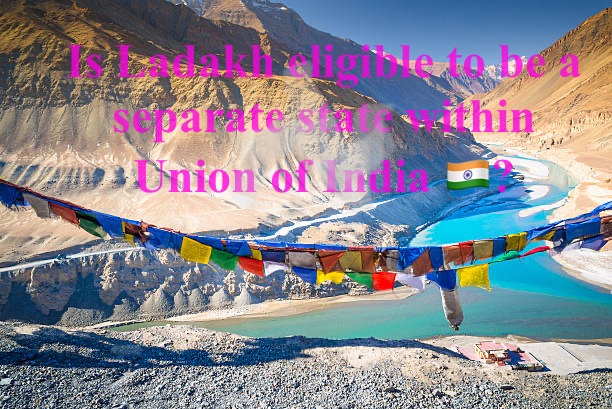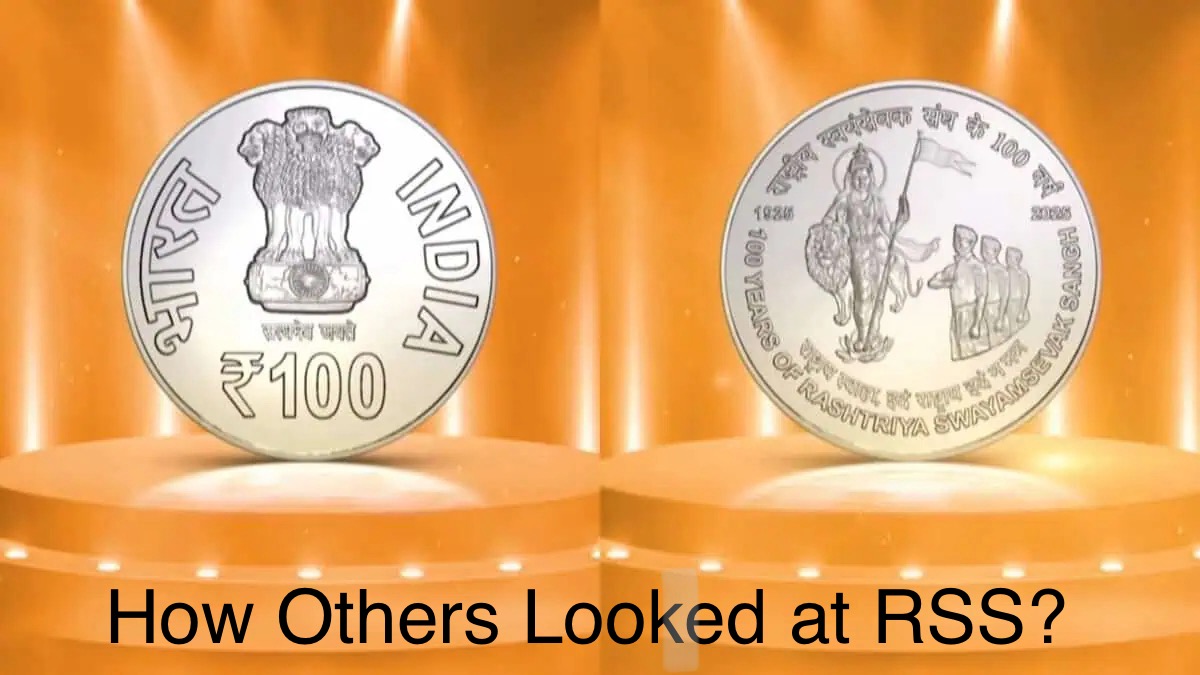
Statehood demand is complex, as eligibility for statehood in India is not strictly defined by a fixed set of criteria but rather by a combination of constitutional, political, administrative, and strategic considerations. While Ladakh has been demanding statehood since its designation as a Union Territory (UT) without a legislature in 2019, the Indian government has resisted granting it full statehood for several reasons. Below is a detailed analysis based on available information and critical examination of the situation:
1. Strategic and Security Concerns
Ladakh’s geographical location makes it a strategically sensitive region, sharing borders with China and Pakistan. The Indian government views centralized control as essential for national security, particularly due to ongoing border tensions, such as the India-China standoff along the Line of Actual Control (LAC), highlighted by the 2020 Galwan clash. Granting statehood would devolve significant powers to a local legislature, potentially complicating military logistics, infrastructure development (e.g., roads for troop movements), and coordination in a region critical for national defense. The Ministry of Home Affairs (MHA) has expressed concerns that autonomy in such a border area could undermine administrative efficiency and security coordination.
2. Constitutional and Administrative Framework
- Union Territory Status: Ladakh was carved out of the erstwhile state of Jammu and Kashmir in 2019 following the abrogation of Article 370, becoming a Union Territory without a legislature under the Jammu and Kashmir Reorganisation Act, 2019. Unlike Union Territories like Delhi or Puducherry, which have legislatures, Ladakh is governed directly by the central government through a Lieutenant Governor. The central government argues that the current UT framework, coupled with the Ladakh Autonomous Hill Development Councils (LAHDCs), provides sufficient local governance without the need for a full state legislature.
- Sixth Schedule Rejection: Ladakh’s demand for inclusion under the Sixth Schedule, which provides autonomous governance for tribal areas, has been rejected by the MHA. The government contends that the Sixth Schedule was designed specifically for northeastern states (Assam, Meghalaya, Tripura, and Mizoram), and extending it to Ladakh would require constitutional amendments, a complex process needing broad political consensus. Instead, the government has proposed protections under Article 371, similar to those in some northeastern states, to address concerns about land, jobs, and cultural identity without granting full statehood.
- Population and Size: While not a strict barrier, Ladakh’s small population (approximately 300,000 as per the 2011 Census) and vast geographical area (59,146 sq km) are sometimes cited as reasons for maintaining centralized control. Smaller states like Sikkim and Goa have been granted statehood, but Ladakh’s sparse population and strategic importance make centralized governance more practical from the government’s perspective.
3. Political Considerations
- Centralized Control Post-2019: The abrogation of Article 370 and the creation of Ladakh as a UT were politically significant moves by the Bharatiya Janata Party (BJP)-led government. Granting statehood could be seen as backtracking on the 2019 decision, potentially weakening the narrative of strong central governance in the region. Analysts suggest that the government is reluctant to grant statehood as it might raise questions about the merits of the 2019 reorganization.
- Electoral Dynamics: The central government, particularly the BJP, may be cautious about devolving power to a state legislature where it might not guarantee political control. If a non-BJP party or coalition were to win a potential Ladakh state election, it could complicate central policies in the region.
- Dialogue with Local Bodies: The government has engaged with groups like the Leh Apex Body (LAB) and Kargil Democratic Alliance (KDA) but has agreed to address only some demands, such as job reservations (85% of government jobs for locals) and additional parliamentary representation, while rejecting statehood and Sixth Schedule inclusion. This suggests a strategy of partial concessions to manage unrest without altering the UT framework.
4. Economic and Developmental Arguments
The central government argues that Ladakh’s status as a UT has increased its budget allocation significantly (from ₹57 crore to ₹232 crore in the first year post-2019) and allows for focused development under central oversight. Statehood might lead to administrative complexities and financial dependency, as seen in some northeastern states with autonomous councils under the Sixth Schedule, where funding gaps and governance issues have limited effectiveness. The government believes the current UT model, with enhanced funding and LAHDCs, is sufficient for development.
5. Local Governance Alternatives
The existence of the Ladakh Autonomous Hill Development Councils (LAHDCs) in Leh and Kargil is cited as a reason why full statehood may not be necessary. These councils have some autonomy over local governance, and recent measures, such as reserving one-third of LAHDC seats for women and recognizing multiple official languages (English, Hindi, Urdu, Bhoti, and Purgi), aim to address local demands for representation and cultural preservation. The government argues that these mechanisms provide adequate safeguards without the need for a state legislature.
6. Counterarguments from Ladakh’s Perspective
While the government’s stance focuses on security and administrative efficiency, Ladakh’s residents and leaders argue that the lack of statehood or Sixth Schedule protections leaves their land, culture, and livelihoods vulnerable. Key concerns include:
- Land Rights: Over 97% of Ladakh’s population belongs to Scheduled Tribes, yet the absence of protections like those previously provided under Article 35A (revoked in 2019) raises fears of land alienation to non-tribals due to tourism and industrial projects (e.g., a proposed 48,000-acre solar park).
- Cultural Identity: Ladakh’s unique Buddhist and Muslim heritage requires safeguards to prevent dilution by external influences, which statehood or Sixth Schedule status could ensure.
- Economic Disparities: High unemployment (26.5% among graduates, double the national average) and limited local decision-making power fuel demands for a Public Service Commission and greater autonomy to address economic needs.
- Environmental Fragility: Ladakh’s delicate ecosystem faces threats from tourism (525,000 visitors in 2023) and large-scale projects, which locals believe could be better managed with greater autonomy.
Critical Perspective
The government’s reluctance to grant statehood appears rooted in a desire to maintain control over a strategically vital region, avoid political risks, and uphold the narrative of the 2019 reorganization. However, this stance risks alienating Ladakh’s population, as evidenced by escalating protests, including violent clashes in September 2025 that resulted in at least four deaths. The rejection of Sixth Schedule inclusion, despite Ladakh’s 97% tribal population, contrasts with its application in northeastern states and may reflect a selective approach to tribal autonomy based on political and security priorities. The government’s offer of Article 371-like protections suggests a compromise, but it falls short of the legislative powers and autonomy that statehood or the Sixth Schedule would provide.
Conclusion
Ladakh is not deemed “ineligible” for statehood in a strictly legal sense, as the Indian Constitution under Article 3 allows Parliament to create new states. However, the central government’s position is driven by strategic, administrative, and political considerations, prioritizing centralized control due to Ladakh’s border location, rejecting Sixth Schedule inclusion due to constitutional complexities, and promoting the existing UT framework as sufficient for governance and development. These reasons, while pragmatic from a national security perspective, have fueled local discontent, as they fail to fully address Ladakh’s demands for self-governance, cultural preservation, and economic empowerment. Ongoing dialogue, may offer further clarity, but the government’s cautious approach suggests statehood remains unlikely in the near term.





